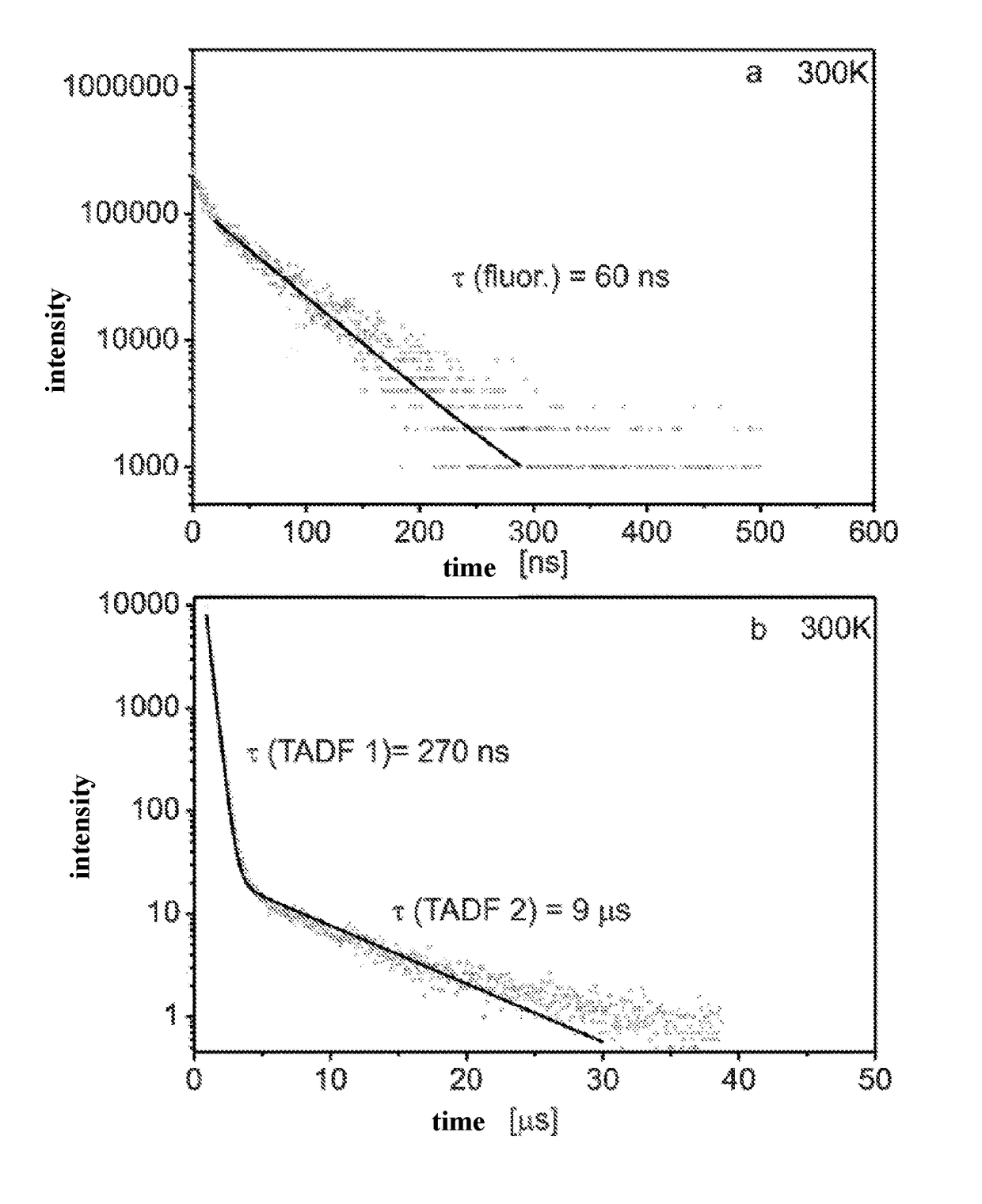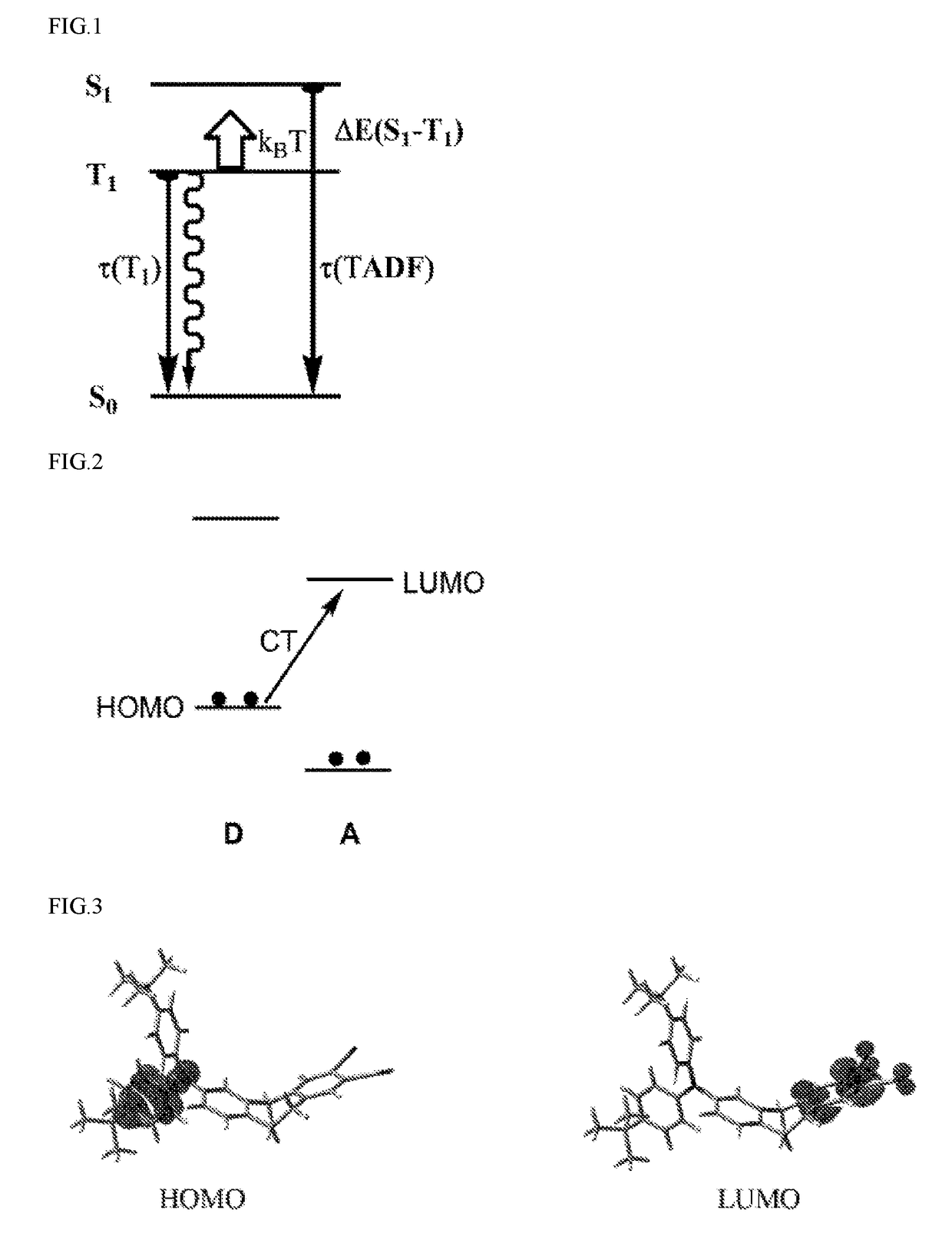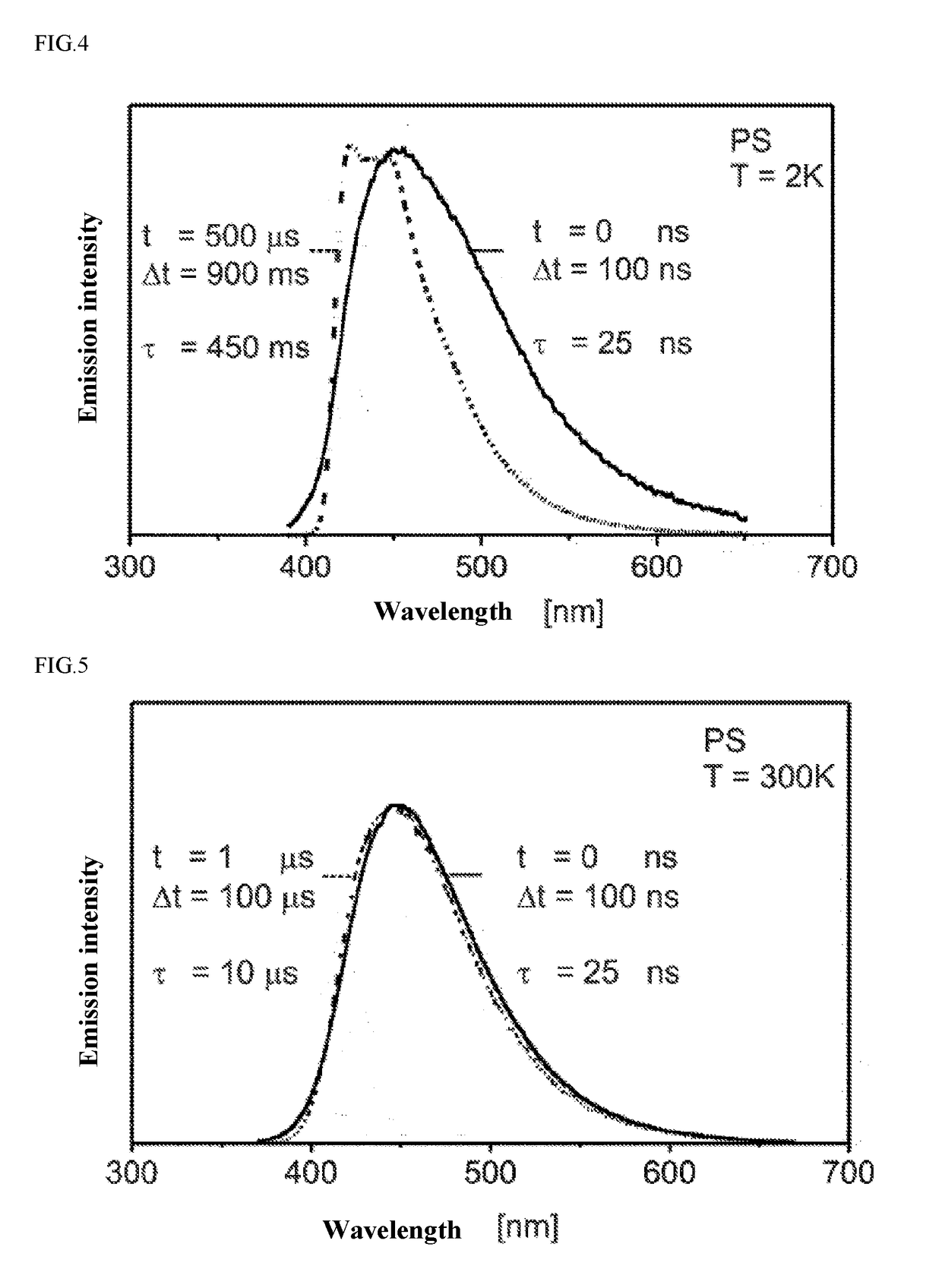Organic molecules having two non-conjugated bridges between a donor and an acceptor for effective thermally activated delayed fluorescence for use in optoelectronic devices
- Summary
- Abstract
- Description
- Claims
- Application Information
AI Technical Summary
Benefits of technology
Problems solved by technology
Method used
Image
Examples
embodiment 1
[0068]
[0069]Example Molecule 1
[0070]The molecules according to the invention shown in Example 1 would be detailed below. As shown from the frontier orbital in FIG. 3, the HOMO and LUMO were located in distinctly different spatial regions of the molecule. It was expected that the gap between the lowest triplet state and the singlet state above it was small enough that the molecule exhibited a significant TADF effect. The calculation of the example molecule 1 within the range of TD-DFT calculation (function B3LYP, basis set 6-31G (d, p)) showed that the energy level difference of the optimized triplet-state geometrical structure was ΔE(S1−T1)=75 cm-1. Therefore, the example molecule 1 was a good TADF emitter. The following reaction scheme illustrated the chemical synthesis of example molecule 1:
[0071]Reactants and reaction conditions:
(1) (t-C4H9—C6H5)2NH, Pd(CH3COO)2, P[(C(CH3)3]3, (CH3)3CONa, 90° C., 19 hours.
(2) K4[Fe(CN)6], Pd(CH3COO)2, P[(C(CH3)3]3, Na2CO3, (CH3)2NCHO, 140° C., 12...
embodiment 2
[0094]
[0095]Example Molecule 2
[0096]The example molecule 2 according to the invention would be detailed below. As shown from the frontier orbital in FIG. 10, the HOMO and LUMO were located in distinctly different spatial regions of the molecule. It was expected that the gap between the lowest triplet state and the singlet state above it was small enough that the molecule exhibited a significant TADF effect. The calculation of the example molecule 2 within the range of TD-DFT calculation (function B3LYP, basis set 6-31G (d, p)) showed that the energy level difference of the optimized triplet-state geometrical structure was ΔE(S1−T1)=85 cm-1. Therefore, the example molecule 2 was a good TADF emitter. The following reaction scheme illustrated the chemical synthesis of example molecule 2.
[0097]Reactants and reaction conditions:
(1) CH3CO2Na, 230° C., 3 hours
(2) HPO2, 12, red phosphorus, CH3COOH, 80° C., 24 hours
(3) (H3PO4)n, 175° C., 5 hours
(4) Al[OCH(CH3)2]3, 275° C., 3 hours
(5) (t-C4H9...
embodiment 3
[0098]
[0099]Example Molecule 3
[0100]The molecules according to the invention shown in Embodiment 3 would be detailed below. As shown from the frontier orbital in FIG. 11, the HOMO and LUMO were located in distinctly different spatial regions of the molecule. It was expected that the gap between the lowest triplet state and the singlet state above it was small enough that the molecule exhibited a significant TADF effect. The calculation of the example molecule 3 within the range of TD-DFT calculation (function B3LYP, basis set 6-31G (d, p)) showed that the energy level difference of the optimized triplet-state geometrical structure was ΔE (S1−T1)=55 cm-1. Therefore, the example molecule 3 was a good TADF emitter.
[0101]The following reaction scheme illustrated the chemical synthesis of example molecule 3.
[0102]Reactants and reaction conditions:
(1) CH3CO2Na, 230° C., 3 hours.
(2) HPO2, I2, red phosphorus, CH3COOH, 80° C., 24 hours
(3) (H3PO4)n, 175° C., 5 hours
(4) (C2H5)2O, 30° C., 24 ho...
PUM
 Login to View More
Login to View More Abstract
Description
Claims
Application Information
 Login to View More
Login to View More - R&D
- Intellectual Property
- Life Sciences
- Materials
- Tech Scout
- Unparalleled Data Quality
- Higher Quality Content
- 60% Fewer Hallucinations
Browse by: Latest US Patents, China's latest patents, Technical Efficacy Thesaurus, Application Domain, Technology Topic, Popular Technical Reports.
© 2025 PatSnap. All rights reserved.Legal|Privacy policy|Modern Slavery Act Transparency Statement|Sitemap|About US| Contact US: help@patsnap.com



